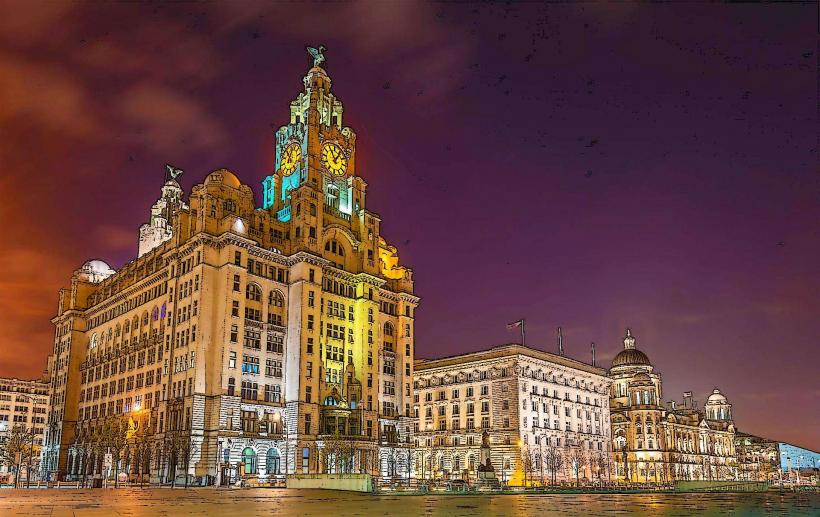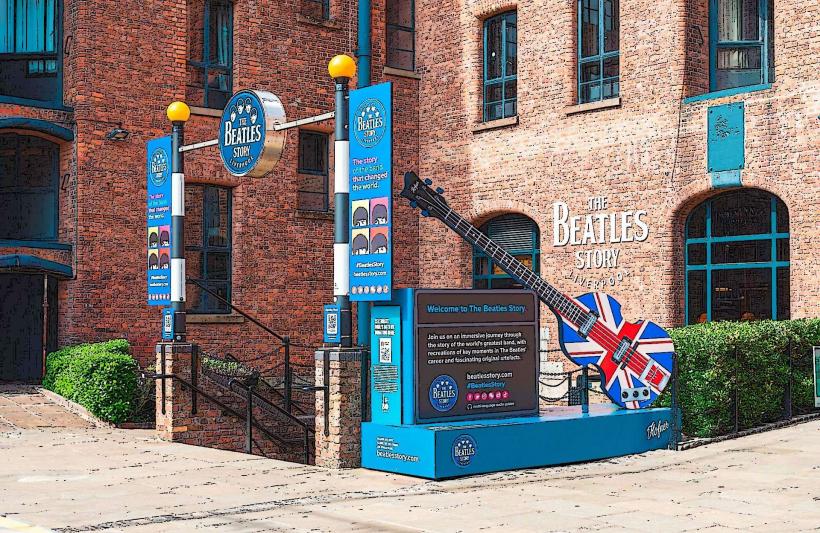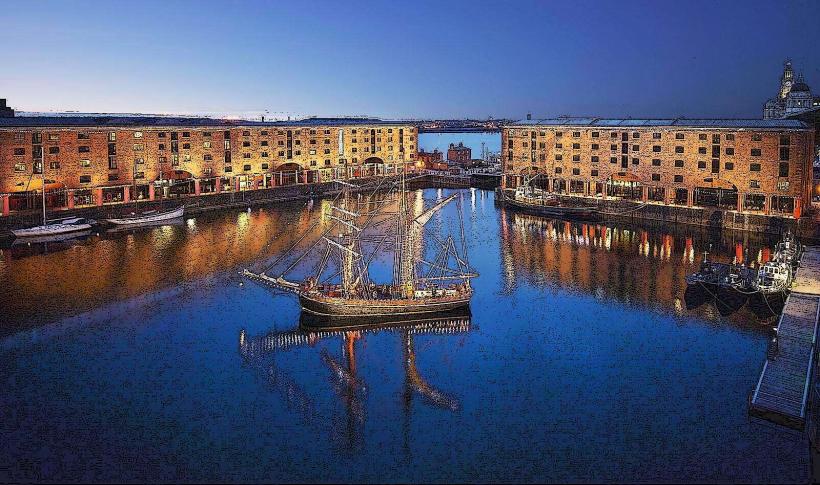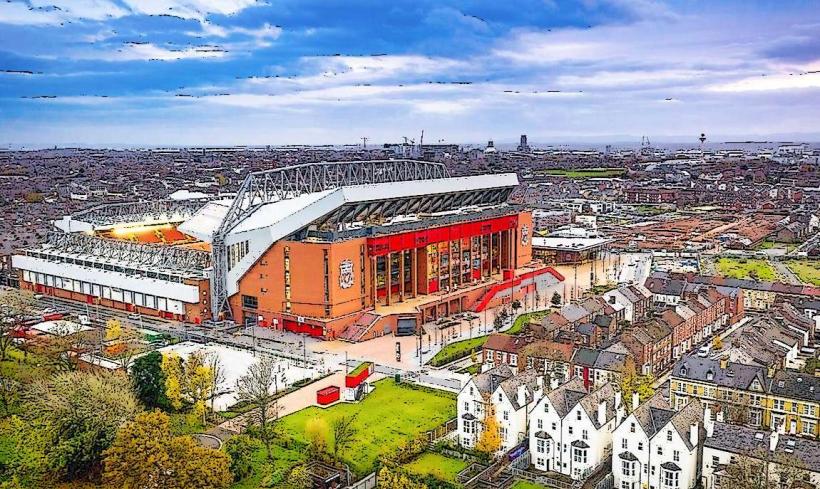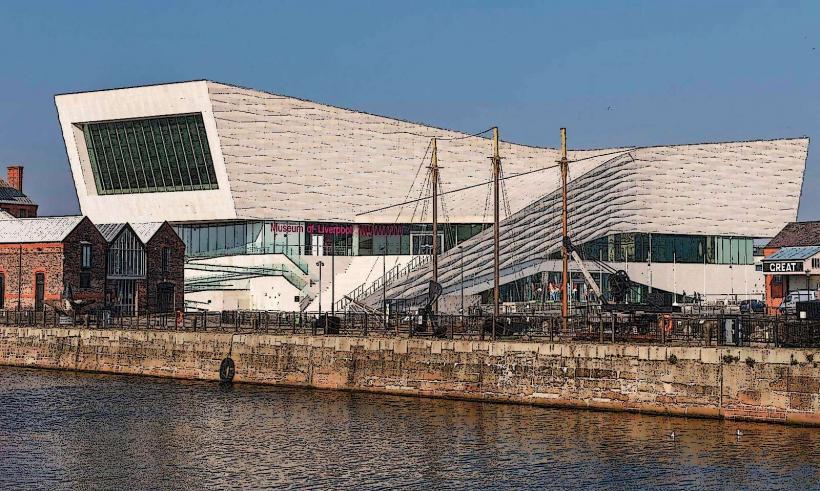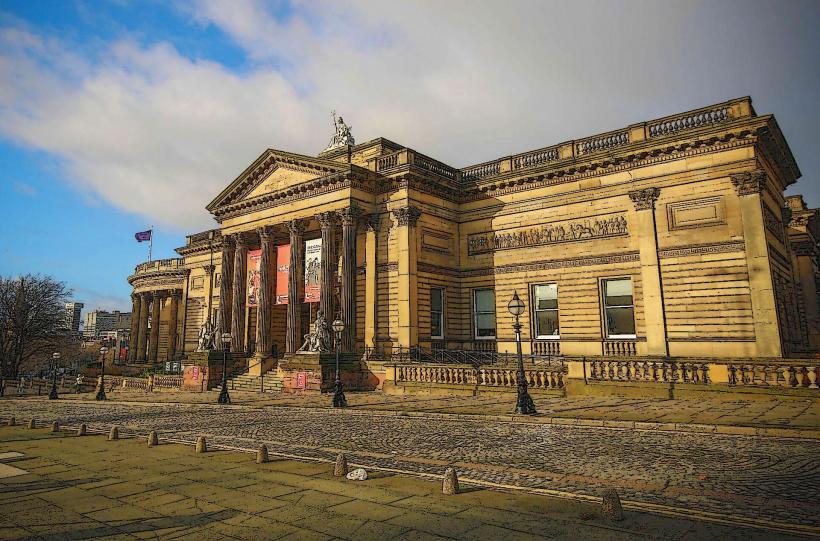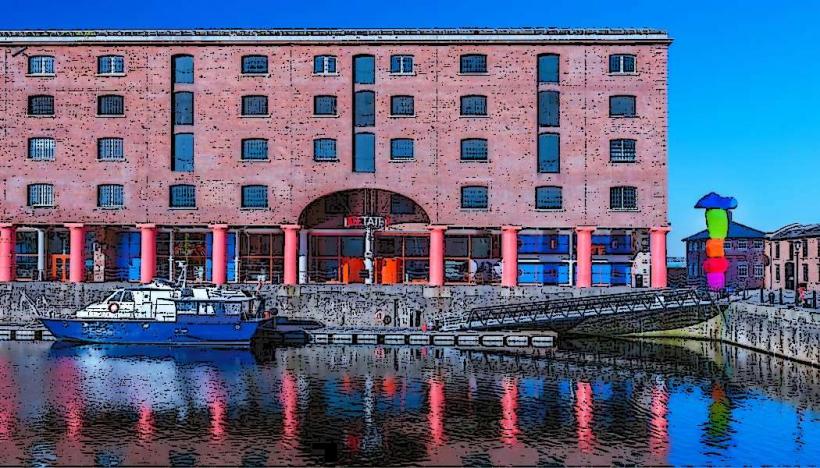Information
Landmark: Saint Georges HallCity: Liverpool
Country: United Kingdom
Continent: Europe
St. George's Hall in Liverpool is a magnificent neoclassical building located in the heart of the city. It is one of Liverpool’s most iconic landmarks, known for its grandeur, historical significance, and architectural beauty. The hall serves multiple purposes, including being a concert hall, a venue for major events, and a symbol of the city's rich cultural heritage.
History and Origins
St. George's Hall was designed by the architect Harold Scott and was built between 1841 and 1854. Its construction was part of the city's broader efforts to modernize and enhance its public spaces during a period of prosperity fueled by the booming maritime industry. Liverpool was experiencing significant economic growth in the 19th century, and the development of St. George's Hall was meant to reflect the city’s increasing importance on the national and international stage.
The building was originally conceived as a venue for a range of civic functions, from concerts and public meetings to law courts and exhibitions. It was designed in a neoclassical style, drawing inspiration from ancient Greek and Roman architecture, which was popular during the early 19th century. The grand scale of the hall and its refined architectural detailing was a reflection of Liverpool’s growing wealth and ambition.
Architecture and Design
St. George’s Hall is an outstanding example of neoclassical architecture. Its design incorporates elements of Greek and Roman architectural traditions, including a massive columned façade and symmetrical proportions that were intended to convey a sense of order, dignity, and civic pride.
Exterior: The hall’s exterior is dominated by a large pediment and grand colonnades of Corinthian columns. The façade features 10 grand columns across the front, which support the roof and create a sense of grandeur. The building’s classical detailing is enhanced by intricate carvings, including representations of various figures from mythology, philosophy, and law, which highlight the hall’s multifaceted cultural role.
Above the colonnades, the pediment includes the inscription "St. George's Hall" in large, prominent letters, signaling the importance of the building. The façade’s grand entrance is flanked by statues of important figures, such as King George IV, after whom the hall is named, further emphasizing its historical and civic significance.
Interior: The interior of St. George’s Hall is equally spectacular, with lavish decoration and opulent details. The main attraction is the Concert Hall, which is renowned for its superb acoustics and is considered one of the finest concert venues in the country.
The Great Hall: The Great Hall is one of the hall's most famous features. It is an enormous space, with an immense domed ceiling that is adorned with intricate paintings and decorative plasterwork. The room is capable of holding large audiences, and its scale and proportions make it one of the most impressive venues in the country for gala events and concerts.
The Concert Hall: The Concert Hall is renowned for its acoustic quality and has been the site of countless concerts and performances by world-class musicians. It is designed in a traditional concert hall style, with the audience seated in a horseshoe-shaped arrangement around a central stage. The walls and ceilings are decorated with plaster reliefs and ornate detailing, making it an aesthetically stunning place to experience live music.
The Law Courts: St. George’s Hall is also home to a set of law courts. In the 19th century, the building housed a crown court and other legal chambers, and it was an important location for judicial functions in Liverpool. Although the courts no longer operate from this location, the original courtrooms still remain as part of the building’s heritage and can be explored during visits.
The Marble Floor: One of the hall's most stunning features is the marble floor of the Great Hall, made from various types of marble sourced from around the UK. The intricate patterns and vibrant colors of the floor add to the building's sense of grandeur and elegance.
The Minton Tiles: The hall also features a stunning collection of Minton tiles that were produced by the famous Minton Tile Company, which was based in Stoke-on-Trent. These colorful tiles cover the floors and walls of the hall, contributing to its distinctive and luxurious aesthetic.
Cultural and Civic Role
St. George's Hall has always had a multifaceted role in the city’s civic and cultural life. It has hosted a variety of events, from classical concerts to political rallies, and served as a venue for some of Liverpool’s most important public functions.
Concerts and Performances:
The Concert Hall has been the site of countless musical performances, including orchestral concerts, recitals, and performances by major artists. It has been a venue for events ranging from classical music to more modern performances. The hall is also known for its exceptional acoustics, which make it one of the finest venues for music in the UK.
Civic Events:
St. George's Hall has been used for a range of civic functions, from council meetings to official ceremonies. The building remains a prominent part of Liverpool’s civic life, with the Lord Mayor and other city officials regularly holding events and gatherings here.
Public Gatherings and Exhibitions:
In its early years, St. George's Hall was also a venue for exhibitions and public gatherings, including political rallies and celebrations. These events have contributed to the hall’s reputation as a space that not only serves as a cultural hub but also a symbol of civic pride and engagement.
Preservation and Restoration
Over the years, St. George's Hall has undergone a number of restorations to preserve its unique architecture and ensure that it continues to serve the people of Liverpool. The building has been lovingly maintained and restored to preserve its historical integrity, ensuring that it remains a significant and functional part of the city.
One of the most notable restoration projects occurred in the early 2000s when the hall underwent an extensive refurbishment to repair the building’s structure and improve accessibility. Today, St. George's Hall is both a Grade I listed building and an important heritage site, recognized for its architectural and cultural significance.
St. George’s Hall Today
St. George’s Hall remains a vibrant and dynamic part of Liverpool’s cultural landscape, hosting a wide range of events and activities. The building offers guided tours where visitors can learn about its history, architecture, and role in the life of the city. The hall is often used for events like concerts, weddings, gala dinners, and civic ceremonies, making it a central hub for both formal and cultural gatherings.
Public Tours and Events:
The hall is open to the public for tours, which allow visitors to explore its fascinating history and see its stunning architecture up close. The museum also offers a range of cultural events throughout the year, from live performances and art exhibitions to educational programs about the building's history.
Special Events and Exhibitions:
St. George’s Hall regularly hosts special exhibitions and events, including live music concerts, art shows, and seasonal festivals. The building’s historical and cultural significance ensures that it continues to attract both locals and visitors alike.
Conclusion
St. George's Hall is one of Liverpool’s most iconic and important buildings, recognized not only for its outstanding neoclassical design but also for its rich cultural, civic, and musical heritage. From its origins as a hub for public functions to its modern-day role as a prominent concert venue and cultural landmark, St. George’s Hall remains a testament to Liverpool’s legacy and its ongoing commitment to preserving its history and culture. Whether you’re visiting for a concert, a special event, or simply to admire its architecture, St. George’s Hall offers a fascinating insight into the city’s past and its vibrant cultural life today.

